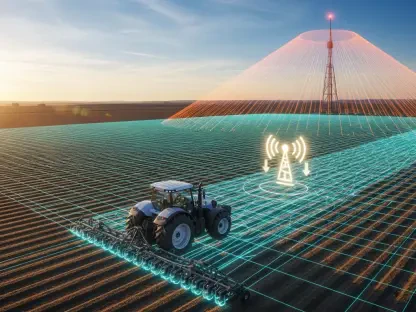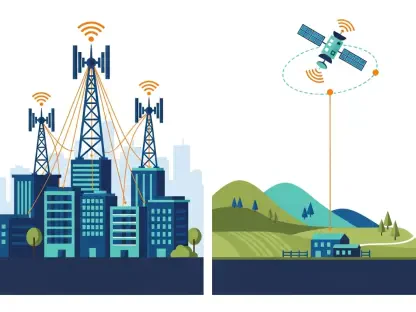In the ever-evolving digital age, the Internet remains the backbone of modern communication, offering boundless opportunities for information and connectivity. Yet, behind this seamless online experience is a complex array of infrastructure and dedicated technical communities working invisibly to the end user. Central to this operation are infrastructure components that enable data exchange and connectivity, and the technical communities that ensure these systems are not just operational but are also efficient and resilient. From Internet Exchange Points (IXPs) to Low Earth Orbit (LEO) satellites and root servers, these elements form the Internet’s foundational backbone. Moreover, the interplay between infrastructure and the expertise driving it reflects a networked ecosystem that is crucial for sustaining global connectivity.
Essential Infrastructure and Connectivity
The seemingly invisible nature of the Internet is built on tangible components like Internet Exchange Points (IXPs), which serve as hubs for networks to efficiently exchange data. By doing so, IXPs help localize data traffic flow, significantly improving network efficiency and lowering consumer costs. They also boost resilience, ensuring that even in the face of disruptions, local data traffic is minimally affected. Another pivotal component is community networks, where local citizens take the initiative to build and operate networks in regions underserved by traditional providers. This grassroots movement emphasizes the need for affordable and accessible connectivity, which is essential in bridging the digital divide. Low Earth Orbit (LEO) satellites are innovative additions that offer high-speed Internet access to rural and remote areas, highlighting technological advancements addressing communication challenges and presenting new opportunities for connectivity where wired options remain unavailable or unaffordable.
Root servers further underscore the complexity and robustness of the Internet’s infrastructure. They handle crucial functions in the domain name system (DNS), translating human-readable web addresses into machine-readable formats. This translation is fundamental for accurate and efficient web browsing and email communication. Without these servers, the seamless access that users enjoy daily would falter, hindering the modern Internet experience. The coordination of root servers is orchestrated by key entities, demonstrating how intricately linked each component is in supporting a unified Internet ecosystem. Ultimately, these foundational elements highlight not only how the Internet remains indispensable in today’s world but also reveal the sophisticated technical architecture sustaining it.
The Role of the Technical Community
Underpinning the Internet’s complex infrastructure is a vast technical community comprising specialized and regional groups dedicated to optimizing its functionality. These communities include infrastructure providers and operators, comprising companies and organizations responsible for the construction and management of networks, cables, satellites, and data centers. Their efforts form the backbone of the global Internet, safeguarding against outages and ensuring continuous operation. Furthermore, service creators and vendors play an integral role by developing platforms and applications that facilitate the delivery and consumption of online content. This includes services such as cloud platforms and cybersecurity solutions, which are essential for protecting data integrity and privacy.
This technical ecosystem is further bolstered by enablers such as the Internet Corporation for Assigned Names and Numbers (ICANN) alongside standards bodies like the Internet Engineering Task Force (IETF). These organizations craft the enabling environment necessary for the Internet to flourish, steering the operation of DNS and setting forth the standards that ensure interoperability. Their influence underscores the importance of governance and standards in maintaining the Internet’s integrity and openness. The technical community’s proficiency remains indispensable, especially for addressing emerging challenges and embracing innovation in an ever-changing digital landscape. The collective expertise ensures the Internet’s ongoing evolution, allowing it to adapt and thrive amidst new technologies and growing user demands.
The Symbiotic Relationship and Future Prospects
The Internet, despite its seemingly intangible nature, relies heavily on physical structures like Internet Exchange Points (IXPs). These act as central nodes where networks interconnect to efficiently swap data, crucially enhancing network performance and decreasing user costs. IXPs localize data traffic, reducing the impact of disruptions on local data flows. Community networks are another key element, involving local citizens building and managing networks in areas where traditional service providers have fallen short. This grassroots effort highlights the necessity for accessible and affordable Internet access to bridge the digital divide.
Innovative technologies like Low Earth Orbit (LEO) satellites allow high-speed Internet in rural and isolated regions, providing connectivity where wired networks are impractical. Furthermore, root servers are vital components of the Internet’s infrastructure, essential for the domain name system (DNS) that translates web addresses into readable formats for machines. Their management showcases the intricate interconnection of Internet components, demonstrating the highly sophisticated and essential architecture that supports the modern Internet.









